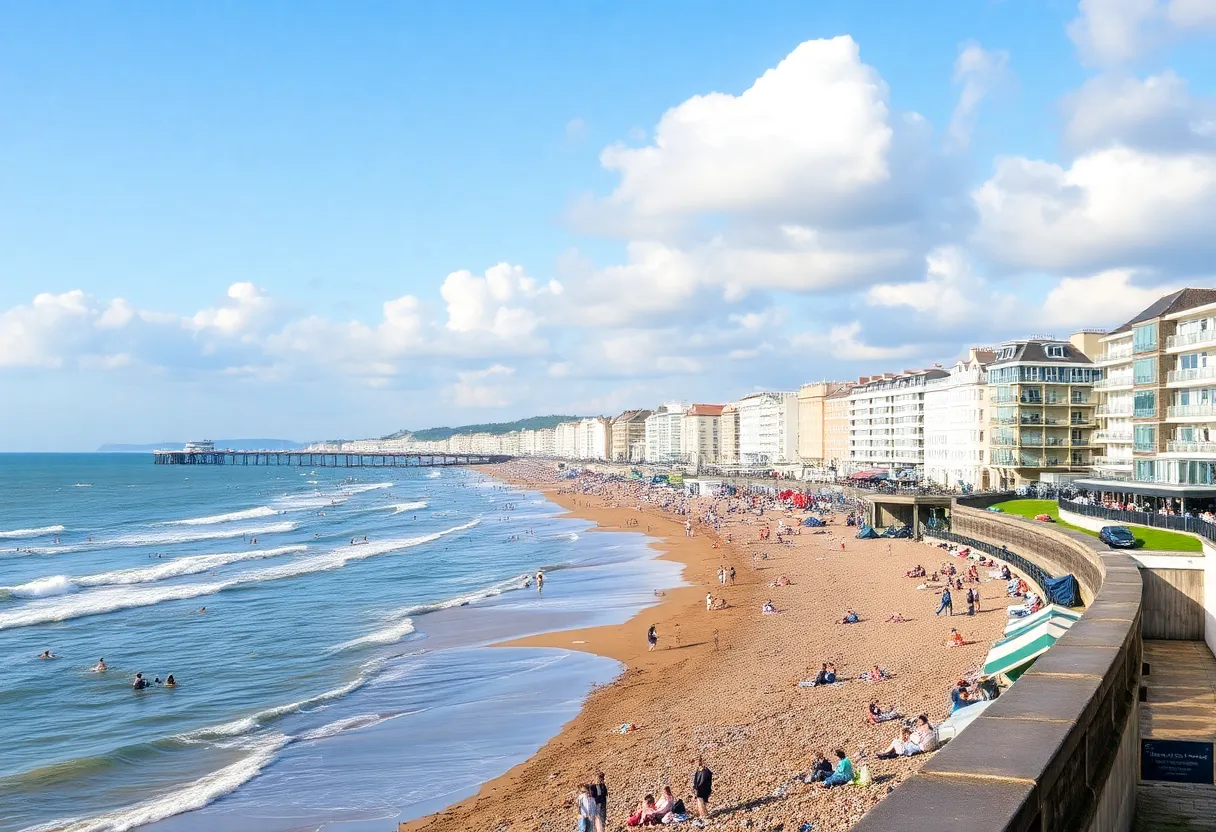News Summary
The evolution of seaside accommodations during Georgian England marked a significant cultural shift. Initially humble fishing villages, these coastal areas transformed into fashionable resorts driven by health practices and societal changes. The rise of the ‘Sea Cure’ drew the upper class seeking leisure and wellness, leading to medical tourism’s emergence. Iconic locations like Brighton became centers for relaxation, significantly impacting local economies. The enduring legacy of these practices is evident today, influencing modern wellness and spa tourism.
Seaside Resorts in Georgian England: From Fishermen’s Havens to Medical Tourism Hotspots
London, England – The transformation of seaside accommodations from humble fishing villages into fashionable resorts marks a significant chapter in Georgian England’s history, driven by evolving health practices and social change during the 18th century. This shift not only influenced the growth of leisure industries but also laid the foundation for what would become modern health tourism.
The Origins of Seaside Accommodations
Before the Georgian period (1714-1837), coastal areas in England primarily served as fishing outposts or small settlements for fishermen. These humble origins changed dramatically as the allure of the ocean for leisure and health benefits gained recognition among the upper classes and medical communities. The limited travel options of the time meant that nearby seaside locations became accessible retreats for the wealthy seeking both recreation and healing.
The Rise of the ‘Sea Cure’ and Its Medical Prominence
During the 18th century, the practice of sea bathing was promoted as a remedy for various ailments, including melancholia, cancer, and leprosy. The concept of the ‘Sea Cure’ became popular, with some patients, even royalty, traveling specifically to seaside towns to partake in sea bathing. Notably, King George III was among those who contributed to the growth of this medical tourism trend, with his endorsement helping to elevate seaside resorts’ reputation as places of health and wellness.
Unregulated Medical Practices and Water Treatments
In Georgian England, the medical industry was largely unregulated, allowing almost anyone to offer health treatments. This lack of oversight meant that medical advice and cures were often based on coarse theories rather than scientific evidence. Treatments adhered to traditional ideas of restoring bodily balance, primarily rooted in the ancient Greek theory of the four humors. Common methods included purging, bloodletting, and using various waters, especially seawater, to improve health.
During this period, medical education emphasized classical texts and theoretical understanding over practical skills, which contributed to diverse and sometimes questionable practices.
Advancements and Popularization of Sea Water Therapy
In 1750, Dr. Richard Russell published A Dissertation on the Use of Sea Water, claiming that seawater could cure various diseases. The publication is considered pivotal in popularizing sea bathing as a health practice. Russell highlighted salt as a key component differentiating sea water from mineral waters, promoting its restorative qualities.
He built a seaside property in 1753 to oversee patient treatments and attracted wealthy clients. His influence contributed significantly to the development of seaside resorts, notably Brighton, which evolved from a modest fishing village into a fashionable resort town under his impact.
Traditional Bathing Practices and Social Customs
During the Georgian era, bathing customs reflected social norms and notions of modesty. Women typically used bathing machines—wheeled structures that allowed them to change and enter the water discreetly—while men bathed nude, often attended by professional ‘bathers.’ These practices underscored the social stratification and etiquette surrounding seaside activities.
This trend is documented in literature of the period, including references by authors like Jane Austen, indicating that sea bathing had become a popular pastime even among the literary elite.
Health Benefits and Seasonal Bathing
Patients were encouraged to bathe in colder months advised as beneficial. Accounts from the time highlight perceived improvements in health as a result of winter sea bathing. Salt air was believed to aid respiratory conditions, and some practitioners even recommended drinking seawater, reflecting the wide-ranging theories about the curative powers of the ocean.
Modern studies echo many of these early beliefs, linking beach visits to reduced stress levels, increased Vitamin D production, and overall well-being.
Economic and Social Impact
As the 18th century progressed, the blossoming British economy allowed more citizens to enjoy leisure travel. Seaside resorts became major centers for health and relaxation, contributing significantly to local economies. Newspaper advertisements and guidebooks for seaside resorts proliferated, helping to attract tourists seeking both entertainment and health benefits.
By 1815, a comprehensive guidebook was available to assist travelers navigating different coastal destinations, emphasizing the commercialization of seaside towns.
Notable Resorts and Royal Patronage
Brighton emerged as a premier destination, particularly for the aristocracy and members of the royal court, including King George III. His positive experiences in Weymouth encouraged court visits, cementing the town’s reputation as a fashionable health resort. The development of bathing machines and other amenities during the Victorian era further facilitated privacy and comfort, especially for women.
Changing Attitudes Toward the Ocean and Continuing Legacy
The perception of the ocean evolved from a place of danger to a source of physical and mental healing, particularly following exploratory voyages and popular stories like Robinson Crusoe. This shift helped solidify seaside resorts’ role in health and leisure industries well into the Victorian era.
The legacy of the ‘Sea Cure’ endures today, as modern wellness trends increasingly favor natural environments, spa retreats, and seaside holidays that reflect the historical importance of ocean-based therapies in promoting health and well-being.
Deeper Dive: News & Info About This Topic
HERE Resources
Additional Resources
- History: Sea Cure Beach Resort
- Thrillist: Hysteric Women Sea Cure TikTok Trend
- Time Out: Best Brunch in Brighton
- Sky News: Police Seek Men After Assaults on Beach
- BBC News: Seaside Health Practices in History
- Wikipedia: Medical Tourism
- Encyclopedia Britannica: Seaside Resort
- Google Search: Brighton Seaside Resort History
- Google Scholar: Health Benefits of Sea Bathing
- Google News: Brighton Seaside News
Author: STAFF HERE WASHINGTON DC
The WASHINGTON DC STAFF WRITER represents the experienced team at HEREWashingtonDC.com, your go-to source for actionable local news and information in Washington, DC, and beyond. Specializing in "news you can use," we cover essential topics like product reviews for personal and business needs, local business directories, politics, real estate trends, neighborhood insights, and regional news affecting the area—with deep expertise drawn from years of dedicated reporting and strong community input, including local press releases and business updates. We deliver top reporting on high-value events such as the National Cherry Blossom Festival, Kennedy Center Honors, and the Washington Auto Show. Our coverage extends to key organizations like the Greater Washington Board of Trade and Destination DC, plus leading businesses in government contracting and technology that power the local economy such as Lockheed Martin and Amazon. As part of the broader HERE network, we provide comprehensive, credible insights into the dynamic landscape of the Washington metropolitan area.





